ASUS N580VD laptop review
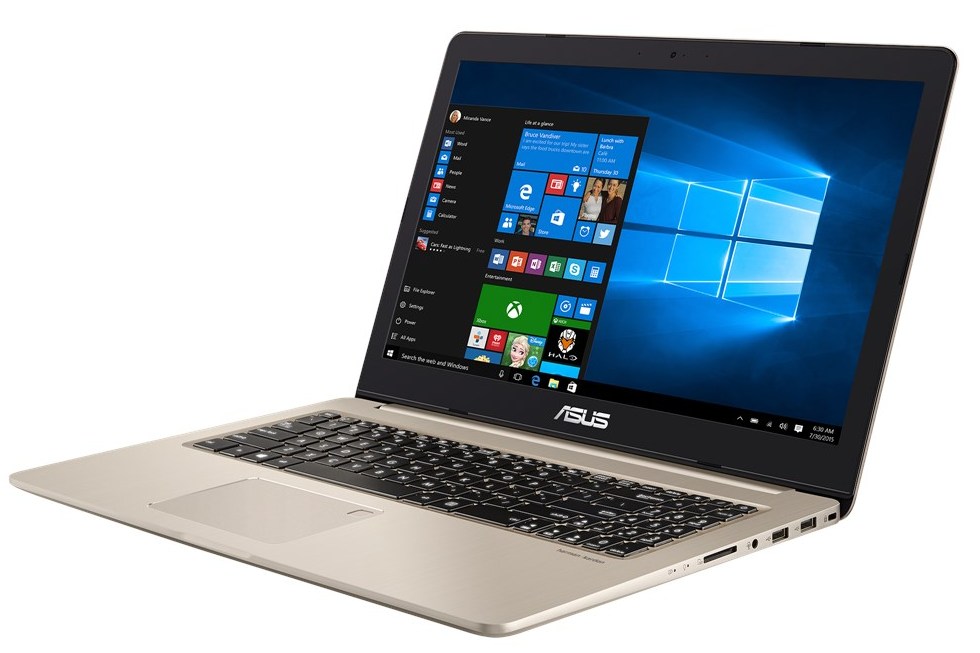
Ultrabooks and transformers - devices are convenient, but they have a number of features and limitations due to thinness and compactness. Some of us want higher performance, the screen is wider, the keyboard is fuller, and there are more connectors. And today in the review - a 15.6-inch laptop ASUS VivoBook Pro 15 (N580VD).
Specifications
Operating system :
- Windows 10 Home
- Windows 10 Pro
Processor :
- Intel Core i7 7700HQ
- Intel Core i5 7300HQ
RAM : 8/16 GB
Display : 15.6 inches,
- 3840x2160, IPS, matte, 72% NTSC
- 1920x1080, IPS, matte, 72% NTSC
- 1920x1080, IPS, matte, 45% NTSC
- 1920x1080, TN, Matte, 45% NTSC
Video : Intel UHD Graphics 620 and Nvidia GeForce GTX 1050 with 2/4 GB of memory
Drive :
- HDD, 500 GB, 5400 RPM, SATA3
- HDD, 1 TB, 5400 RPM, SATA3
- HDD, 2 TB, 5400 RPM, SATA3
- SSD, 128 GB, SATA3
- SSD, 256 GB, SATA3
- SSD, 512 GB, SATA3
Wireless :
Wi-Fi 802.11ac
Bluetooth 4.2
Connectors :
1 x Type A USB 3.0 (USB3.1 GEN1)
1 x 2-in-1 audio
1 x RJ45 LAN
1 x Type C USB3.0 (USB3.1 GEN1)
1 x SD card reader
1 x HDMI
2 x USB 2.0
Sound : Harman Kardon Certified SonicMaster Stereo System.
Webcam : VGA
Battery : lithium-polymer, 47 Wh, accelerated charging (up to 60% in 49 minutes)
Dimensions : 380 x 256 x 19.2 mm (W x H x T)
Weight :
1.99 kg (without fingerprint sensor)
2.2 kg (with fingerprint sensor)
Appearance
The laptop looks pretty streamlined thanks to rounded corners and edges, smooth interfacing of faces. Aluminum housing. The laptop is quite large, but quite light: either 2 or 2.2 kg.
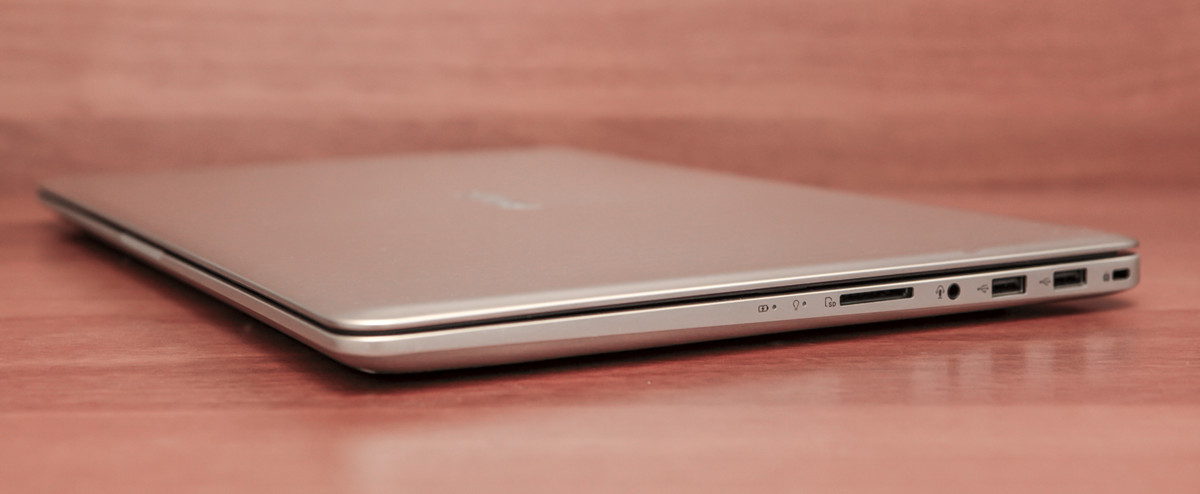
Instead of the usual Zen concentric pattern, the thinnest vertical texture of brushed metal is applied to the upper side of the lid.

At first glance, it is impossible to replace the memory or drive, because there are no hatches on the underside of the body, only the ventilation grilles and the speaker grids. But in fact, you can change the two levels of memory (increasing up to 32 GB), as well as SSD and hard disk. Only for this you have to remove the entire bottom case cover.

On the left side are: connector RJ45, USB 3.0, HDMI and USB 3.0 Type C.
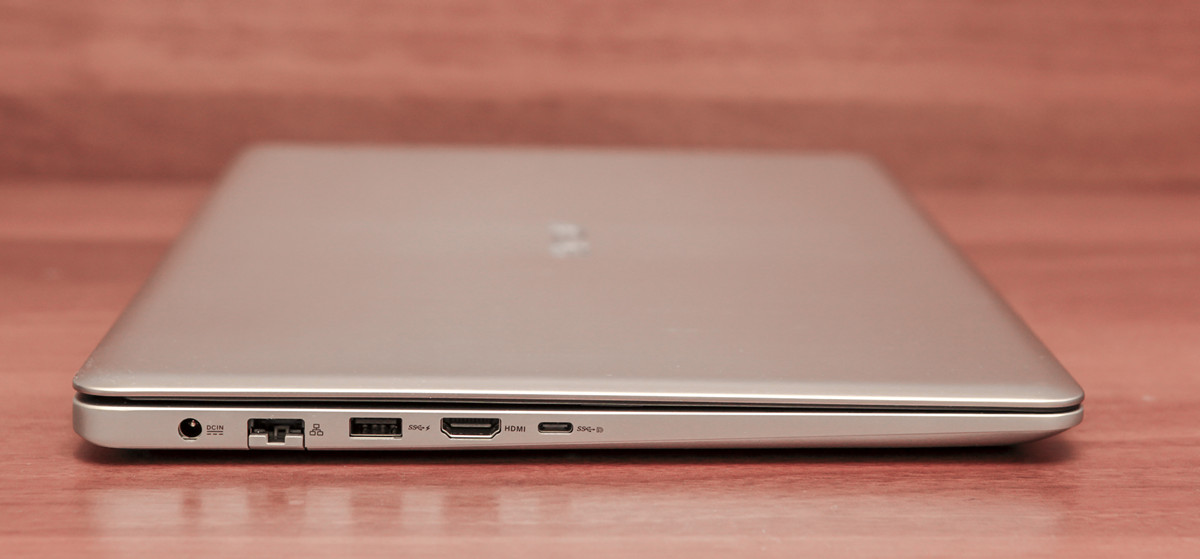
On the right side of the SD-card reader, audio connector 2-in-1, two USB 2.0 and Kensington lock.

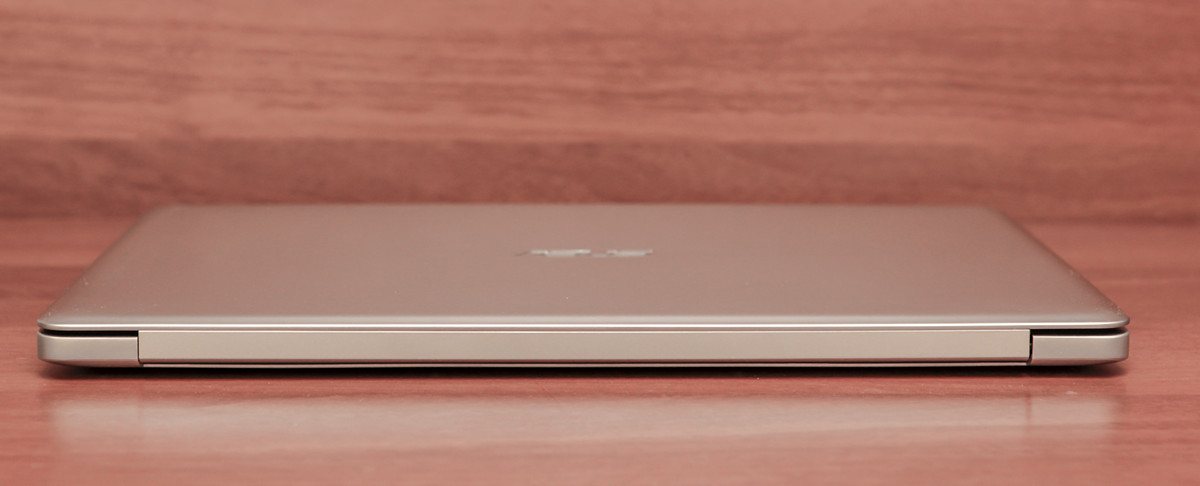
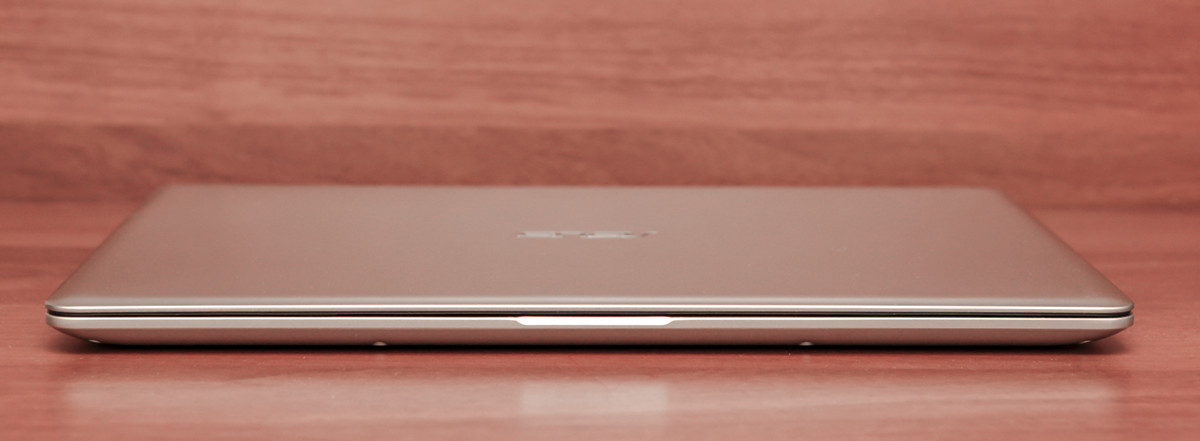

The display is matte, around it is a frame of matte textured dark gray plastic.


After the ultrabooks, the abundance of keys is even somewhat embarrassing, and you already forget that there are so many of them. The key travel is about 1.5 mm, white backlight with three degrees of brightness.
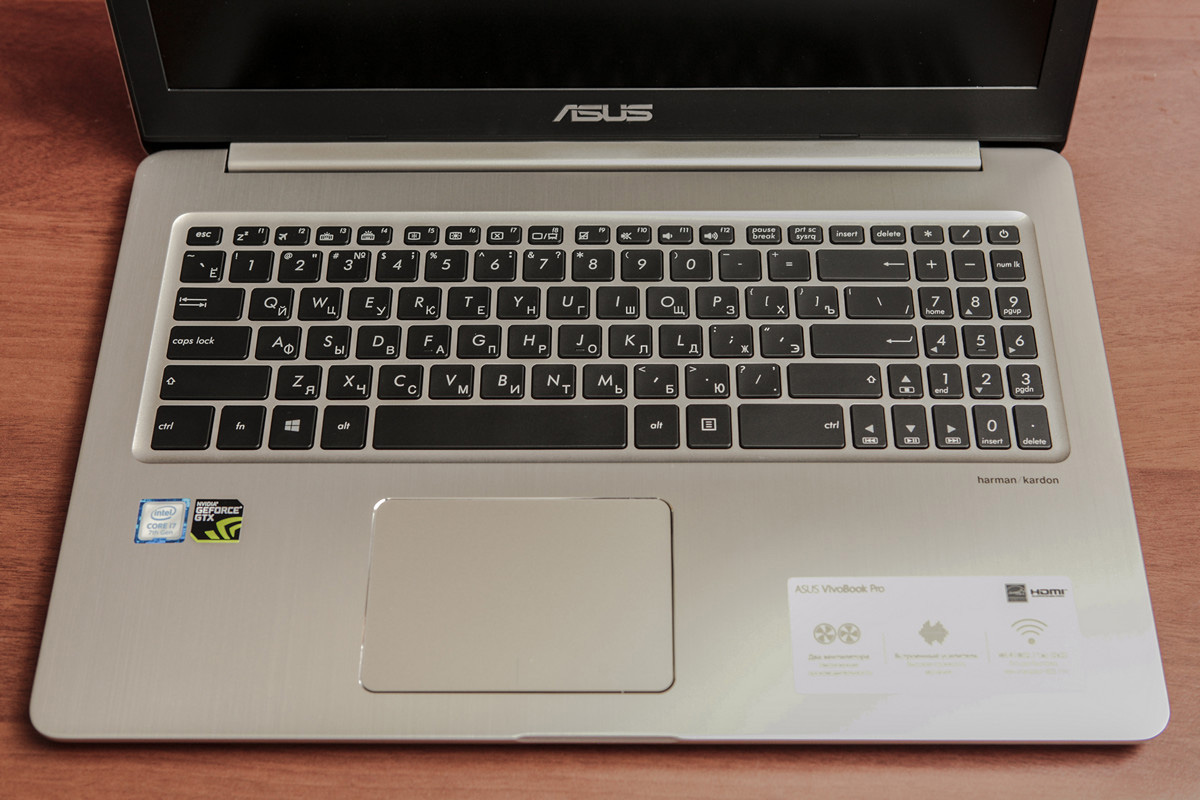
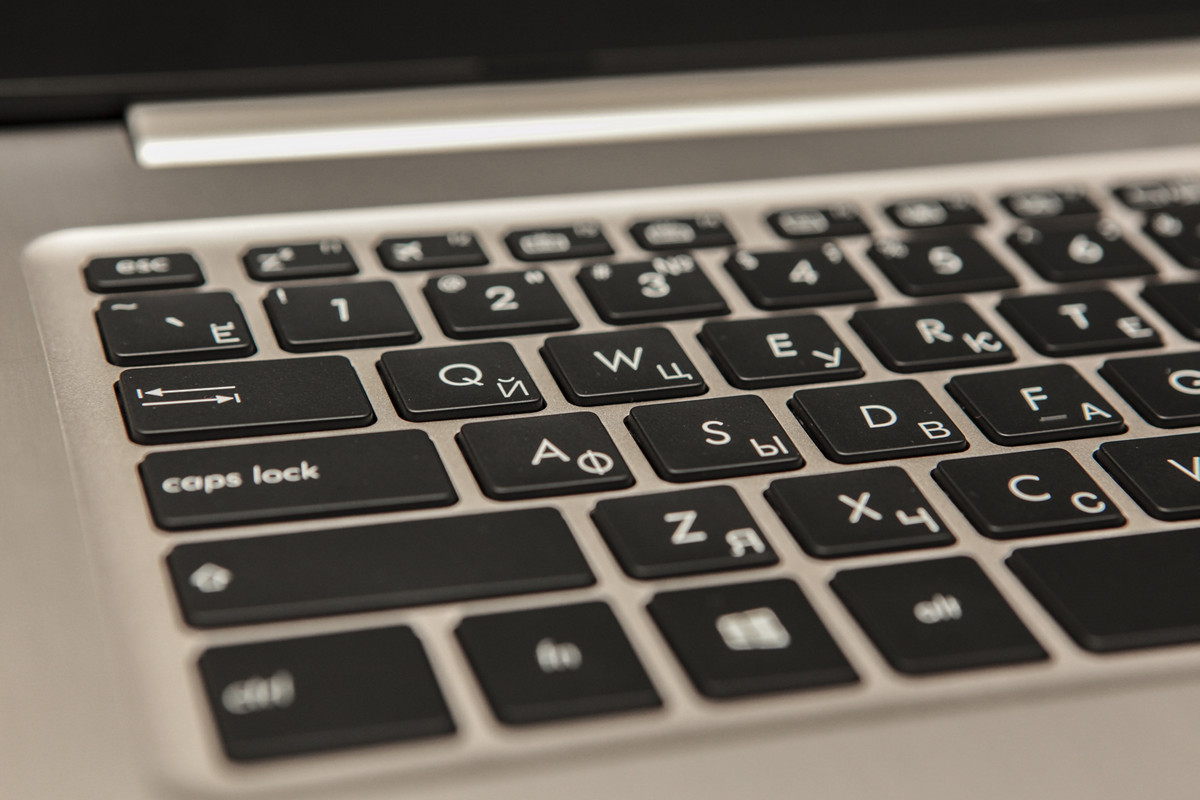
The touchpad may be with a fingerprint sensor, but I had a version without it.

Display
There are as many as four modifications of the ASUS VivoBook Pro 15 (N580VD), they all differ in displays: one with 4K resolution, IPS matrix and 72% NTSC color coverage, and the other three with 1920 x 1080 resolution: two with IPS matrix and 72% coverage and 45 % NTSC, and the latter with TN matrix and coverage of 45% NTSC. That's just the latest version and was on the review.
Of course, the viewing angles of TN are smaller than those of IPS. Still, modern matrices are no match for the fact that they were 10 years ago - the drop in brightness and contrast with a change in angle is not so quick and dramatic at all. As for color rendering, the subjective display of the VivoBook Pro 15 is almost the same as the more expensive versions with IPS with 72% NTSC color coverage. If you put them together, the difference will be noticeable, but if you are not going to edit photos, create interfaces or do design, then for all other tasks you can safely take TN with a 45% NTSC coverage.
Sound
The Harman Kardon logo has firmly established itself on ASUS devices: the sound subsystems of a wide variety of ultrabooks, laptops, and transformers are now awarded certification by a reputable manufacturer of high-quality acoustics and technology for audiophiles. Well, it only pleases. In a more spacious compared to ultrabooks, the VivoBook Pro 15 case managed to accommodate two speakers with acoustic cameras with a total volume of 8 cm 3 . All this is equipped with a proprietary amplifier, and I can say that playing a laptop is really good. And loud.
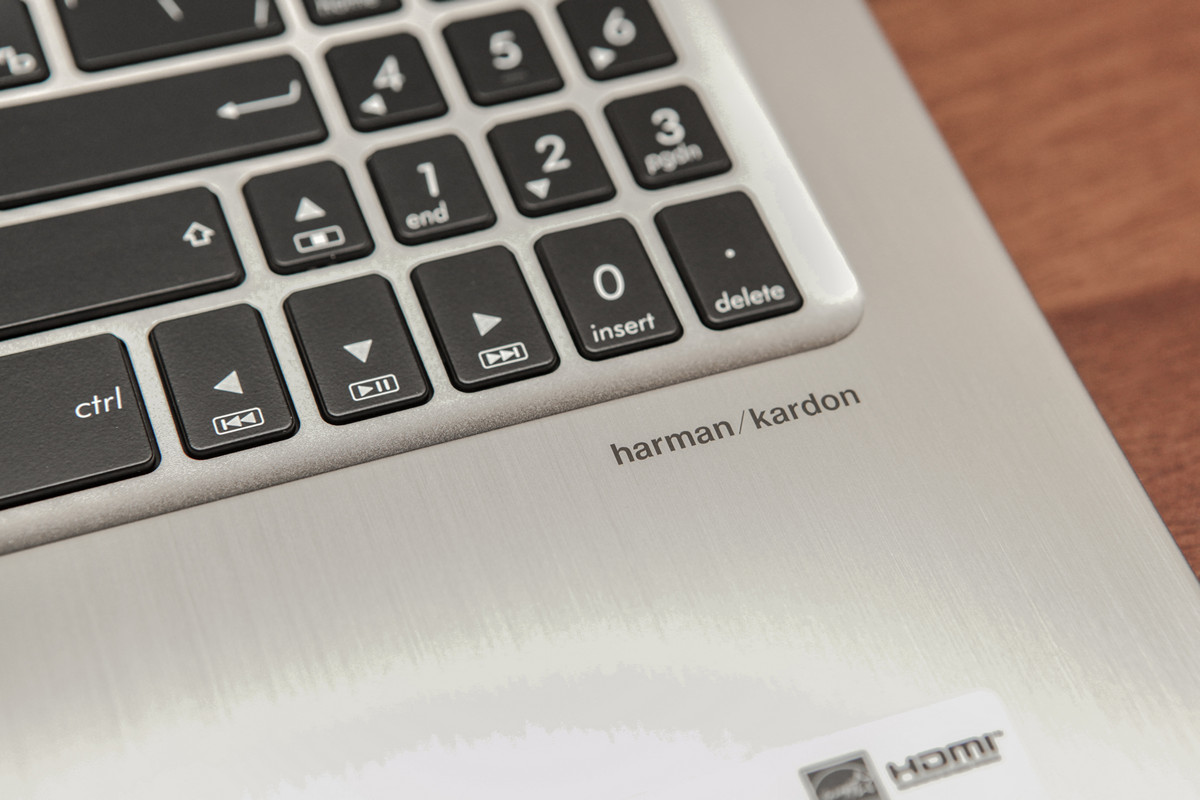
Performance
ASUS VivoBook Pro 15 can be equipped with a quad-core processor or Intel Core i7 7700HQ , or Intel Core i5 7300HQ . RAM 8 or 16 GB.

VivoBook Pro 15 is characterized by a variety of modifications: not only does this laptop come with four different displays, it also has several combinations of drives (SSD for the system and HDD for data storage):
- HDD, 500 GB, 5400 RPM, SATA3
- HDD, 1 TB, 5400 RPM, SATA3
- HDD, 2 TB, 5400 RPM, SATA3
- SSD, 128 GB, SATA3
- SSD, 256 GB, SATA3
- SSD, 512 GB, SATA3
I, for example, had a 128 GB SSD with a 1 TB hard drive:

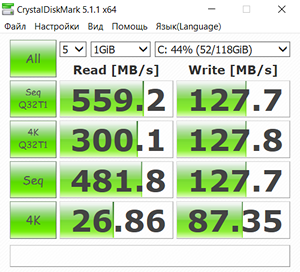


But the main feature of ASUS VivoBook Pro 15 (N580VD) is in the video card: this is a full-fledged Nvidia GTX 1050 with 2 or 4 GB of memory. Well, the built-in Intel UHD Graphics 620 for "office" tasks.


Powerful processor and graphics card "desktop" class require intensive ventilation. Remember, what are the long ventilation grilles on the bottom? Those that are on the sides, pass right along the edges of the cooling system fans, so that they get the cold air in the shortest possible way.
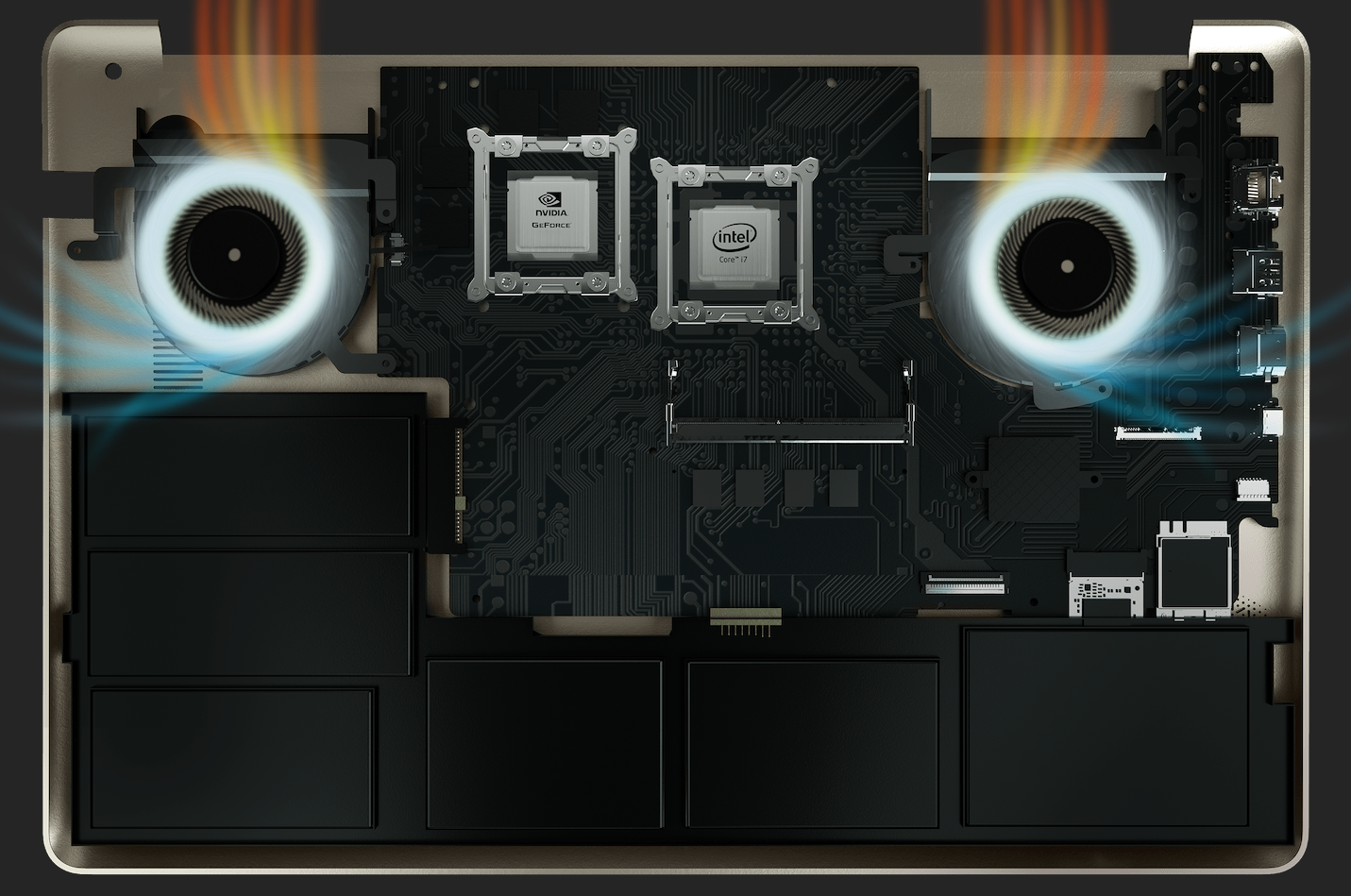

And hot air is blown into the upper and lower slots between the hinge of the cover and the housing.
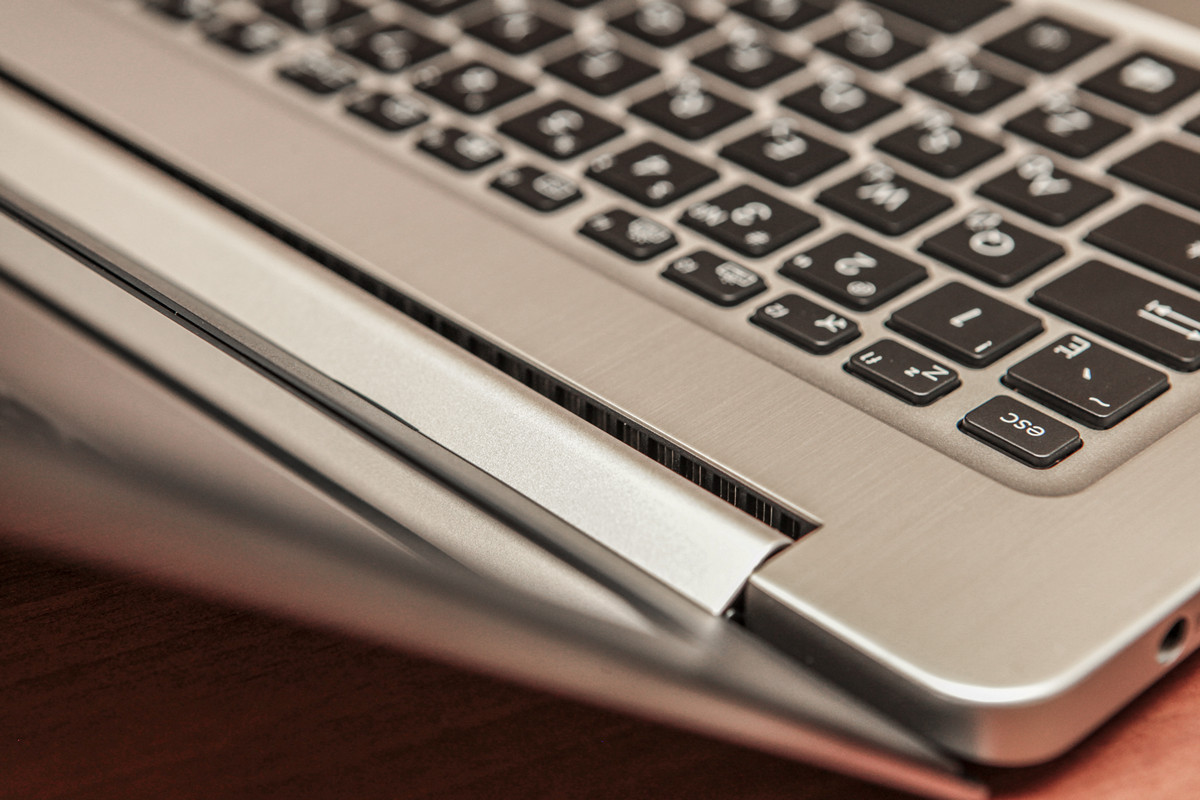
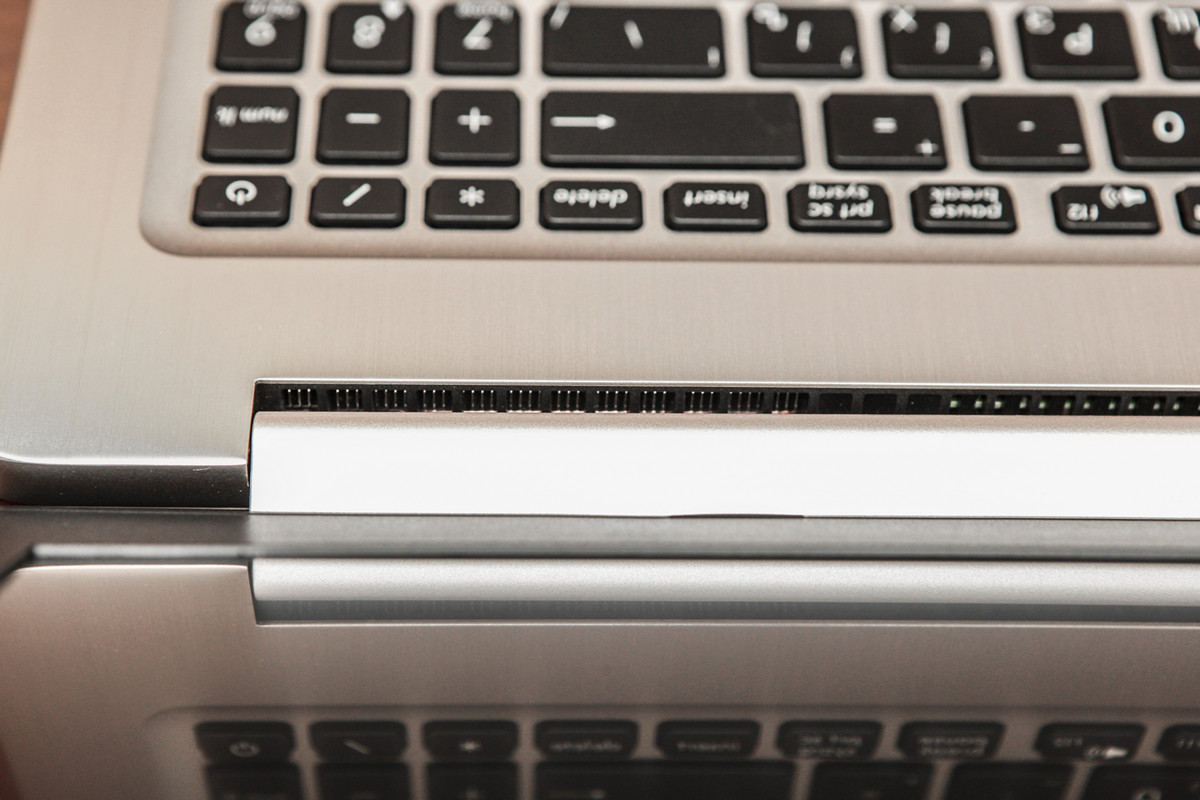
All this economy works quietly enough, during the graphic benchmarks I did not want to turn up the music or put on the headphones.
Benchmarks
GFX Bench
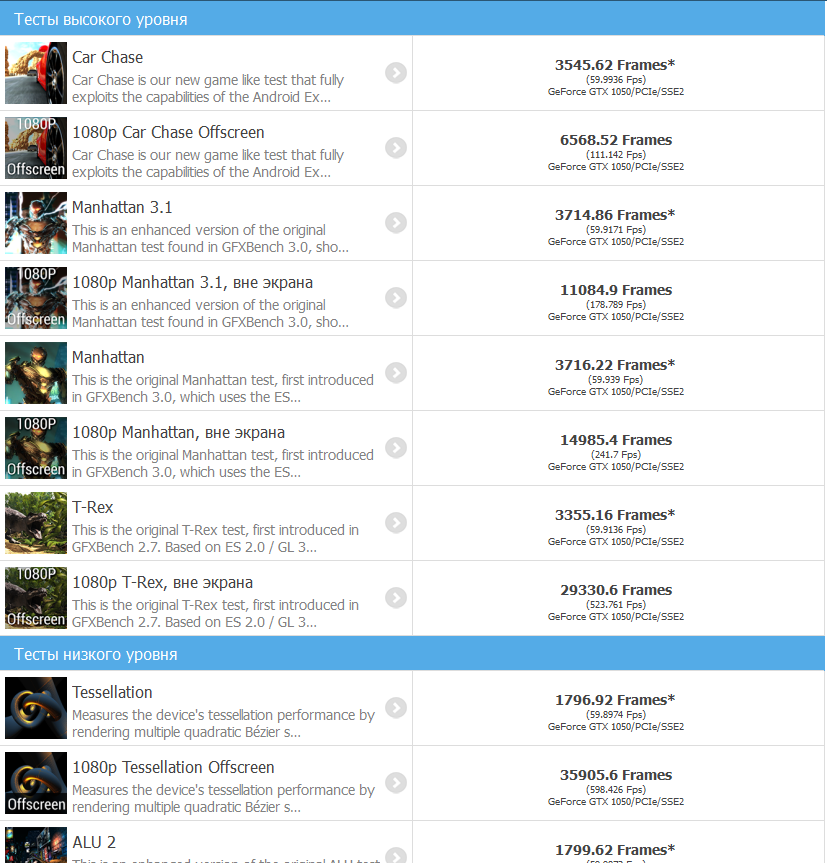

Unigine Superposition
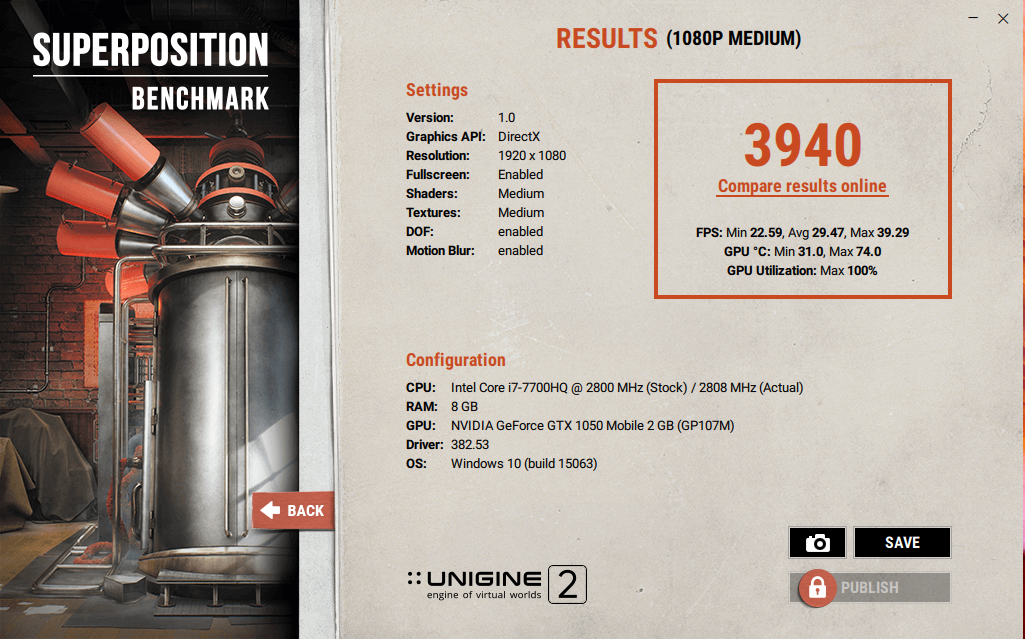
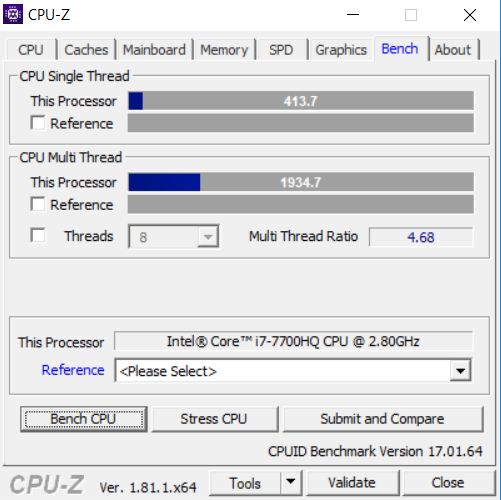
3D mark

(with Ultra settings):

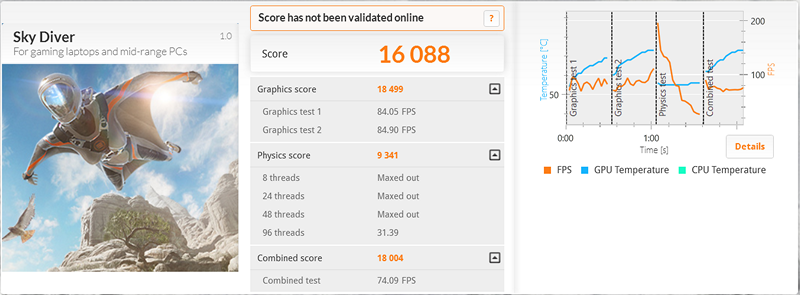


PC mark

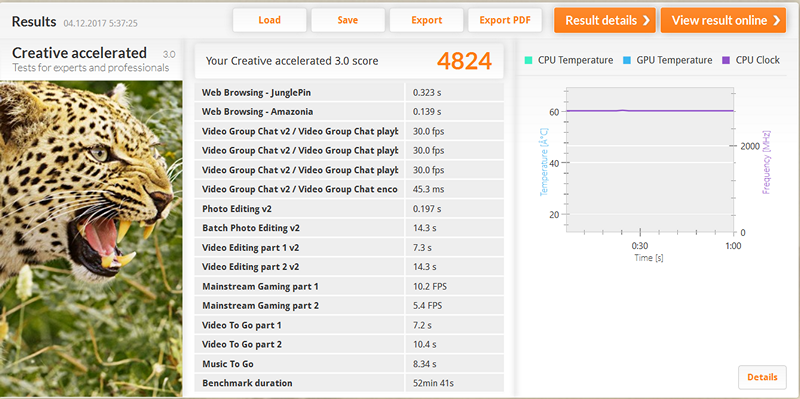


Unigine Superposition


3D mark

(with Ultra settings):




PC mark


A lot of computational power = a lot of watts consumed. A revolution in the batteries has not yet happened. Therefore, from 100% to 20% of the charge drops in less than 3 hours. Fortunately, the VivoBook Pro 15 is equipped with a fast charge function - up to 60% can be charged in 50 minutes.

Conclusion
ASUS VivoBook 15 Pro - a classic "workhorse", most likely to a stationary workplace. No, this is not a game monster of 4-5 kg in weight, there is no more than 2.2 kg of live weight, so if you wish, you can safely throw the VivoBook Pro 15 into a bag or backpack and go to work in a cafe, coworking or nature. The benefit of a matte screen does not glare, so that the sun and bright lights you are not enemies. A powerful graphics card will help pass the rest of the game or add power for learning neural networks. The main thing - to keep the outlet in sight.
Recommended retail price: from 51 990 rub.
All Articles